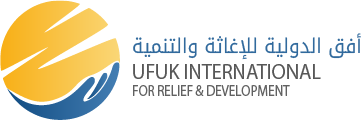- Home
- News
- Humanitarian Reports
- The Struggle for Survival
The Struggle for Survival

The Eastern Ghouta, or as it was called 'Damascus food basket', belongs administratively to Damascus Countryside Governorate. It consists of several regions and areas, including Douma and Mleiha Regions, Harasta, Kfar Batna, Nashabiya and Arbeen Areas. During the conflict, the Eastern Ghouta was divided into four sectors: Douma Sector which consists of Douma Region, the Central Sector which consists of Arbeen, Kafr Batna and Harasta Areas, the Al-Marj Sector which consists of Nashabiyah Area and its prefecture, and the Southern Sector of Mleiha Region.
The whole Ghouta territory used to include 53 towns, but after the Revolution entered its seventh year only 21 towns remained, with the others turning into battlegrounds and their inhabitants were forcibly displaced into the Central Sector which is still free, as called by the opposition and its patrons, but still until the date of writing this report under severe poverty, and is horribly overcrowded.
The international bodies, in all of its forms and names, have been unable to protect 360,075 civilians, mostly children and women, who are living inside a big prison, deprived of minimum basic needs of decent life despite all the reports and humanitarian appeals issued by organizations active inside and outside of Ghouta, amid international indifference over the bitter humanitarian situation which struck its lowest levels, threatening to claim more lives of innocent civilians under continued deteriorating conditions.
During this month, the pace of internal evacuation has increased dramatically although the Eastern Ghouta area has been included within the de-escalation agreement. Sub-offices of the Unified Relief Bureau existing across the Eastern Ghouta have documented the evacuation of 2,312 families --over the past few days prior to writing this report--from the towns of Harasta and Madira only as a result of the extensive shelling, in addition to the double suffering experienced by many evacuees due to repeated moving from one place to another because of absence of safe places to shelter them. Furthermore, the bombardment has engulfed all of the Eastern Ghouta towns on one side, and the lack of proper houses that can protect them from the cold winter on the other.
Reaching out to the needy population poses a dilemma in eastern Damascus as the regime forces tightened the siege on the civilians, depriving them of the minimum basics of survival by destroying the infrastructure and banning food, medicine, medical care supplies from reaching them. Besides, the only humanitarian corridor linking the capital Damascus to the besieged areas is totally closed, leading to catastrophic humanitarian consequences for many children and women, and increase in the number of malnutrition cases, diseases and chronic illnesses which need to get out of the Ghouta for treatment because of the lack of medicines, medical equipment, equipment and the specialized cadres. This situation resulted in a number of cases of death recently.
The Living Reality of Eastern Ghouta Families
Local Product:
The siege and shelling affect considerably the local production sectors as follows:
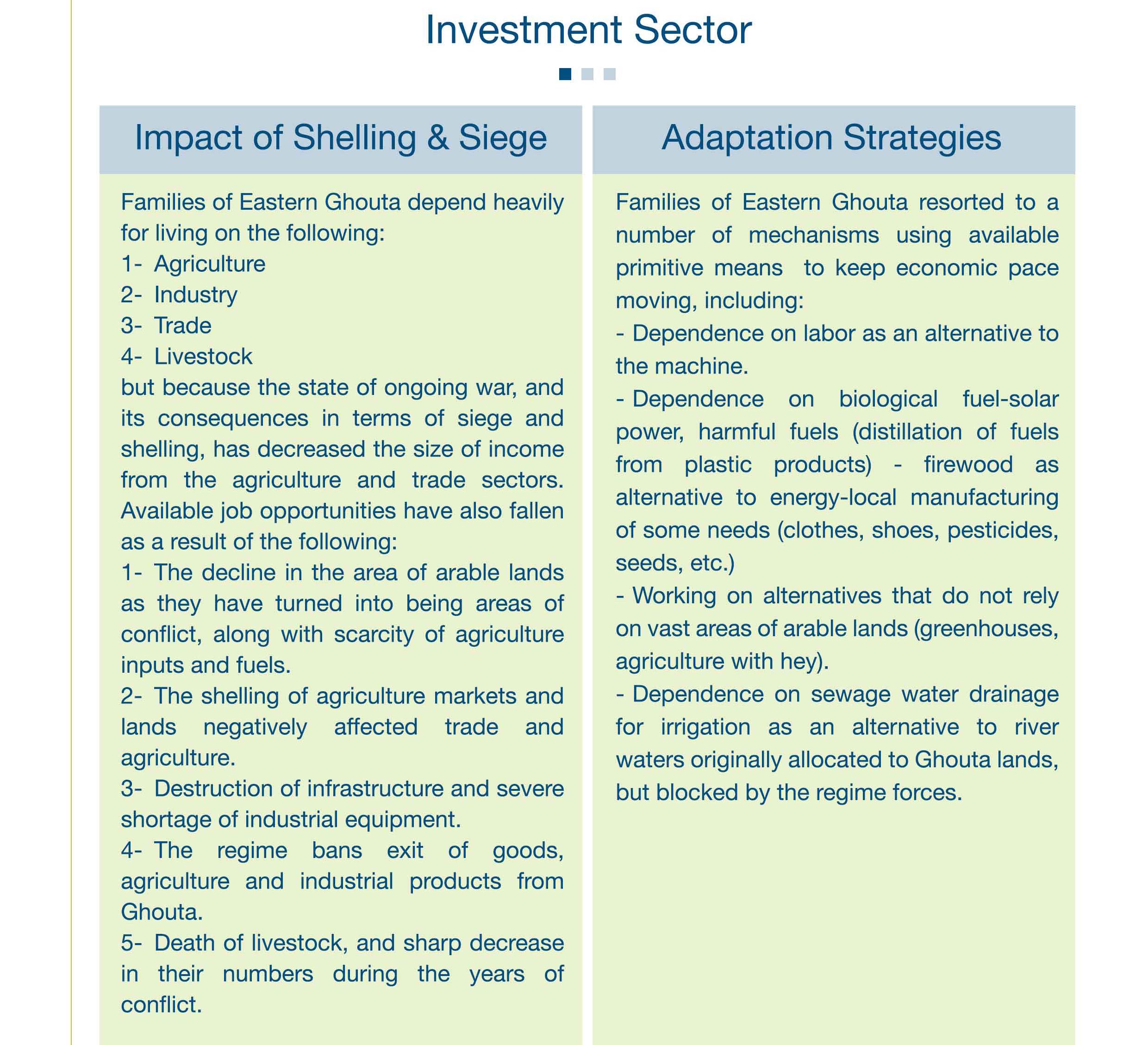
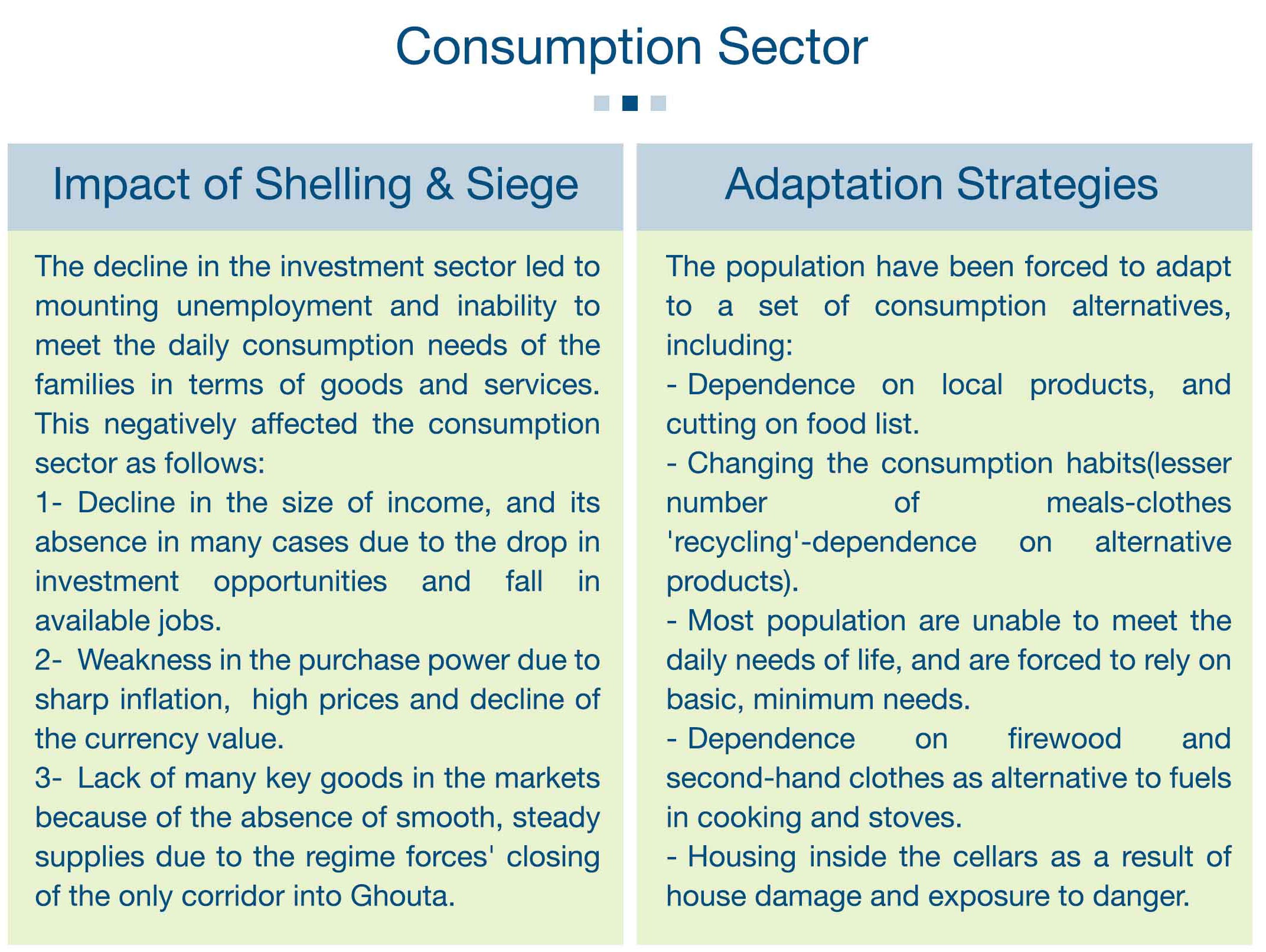

* The Negative Strategies of Adaptation
The besieged families in Ghouta, who do not have income or limited income, prioritize their basic survival needs, although their members may not be able to meet their needs, driving them to resort to negative adaptation strategies, most notably are:
1 - The strategy of reducing the quantity/ or type of food: For example, most families of Ghouta eat only one imbalanced meal, while some families rely on vegetables and bread, not apt as human food, in addition to expired and corrupt substitute for food value because of the lack of such items and their high prices. This causes widespread disease outbreaks and malnutrition.
2- Strategy of Forcible Sharing of Shelter: the internal displacement forced besieged families to participate in negative strategies of adaptation that put them at risk of exposure to gender-based violence and other protection-related risks.
For example, sharing shelter with others can lead to overcrowding, posing a risk of lack of privacy and sexual exploitation.
3- Strategy for reliance on primitive handicrafts: For example, due to high fuel prices, the interruption of engines and water networks, parents rely on children to extract drinking water and to tow vehicles as an alternative to driving forces, thus posing a threat to the lives and future of children.
4 - Strategy for the search for alternative sources of energy: the burning of clothing for cooking and heating and the process of distillation of plastic items and fuel for the purpose of the extraction of fuel negatively affect human health and the environment that the burning process takes place within populated areas.
5- Strategy for the search for alternative sources of income: for example, begging "as a means of earning income" can expose individuals, especially women, children and girls, to exploitation and harassment, possibly physical or sexual abuse, and social disorders. The lack or decline of family income clearly undermines the enrollment of children at schools, and limits the ability of poor families to access health services. Rising food prices have also led to a decline in household budgets, increased risk for vulnerable families to end their children's education, and other measures to promote family income, including allowing children to work in the streets, the worst forms of child labor as it could seriously threaten the health and protection of children. Adolescent children are the most vulnerable to the adoption of dangerous behaviors and adaptation mechanisms, They are at greater risk of abuse and exploitation.
Targeting Humanitarian Workplaces:
The targeting of humanitarian premises by the regime forces has resulted in the denial of access to the affected population. A number of cases of non-observance of fundamental humanitarian principles have been recorded in recent years as a result of the exposure of humanitarian workplaces to the shelling.
In certain cases, the regime has intensified the deliberate targeting of humanitarian staff. Over the past years of the conflict, dozens of humanitarian workers have been killed in the course of their duty to distribute humanitarian assistance to vulnerable groups. Since the beginning of the conflict, the Unified Relief Bureau has documented the killing of 23 cadres while delivering assistance to the poor and the needy.
The Shy Response to the Suffering of Vulnerable Groups in Ghouta:
Entry of the United Nations Aid Convoys:
Under international pressure, the regime forces that impose the siege had allowed the UN agencies and the Syrian Arab Red Crescent to provide some urgent humanitarian aid to those under siege, but this simple aid did not alleviate the tragedy of civilians in Ghouta, especially the most vulnerable groups.
The First Stage:
On 30/10/2017, a convoy of international aid of 8,000 relief food basket and some medical materials entered the besieged area. The amount entered in the convoy only covers 10 % of the needs of the families of Ghouta for a few days.
The Second Stage:
On 14/11/2017, the second UN aid convoy entered, consisting of 4,200 relief baskets and some medical supplies. This amount was less than the previous one, as it covers only 5 % of the families of Ghouta for a number of days.
There are no means of protecting civilians in the Eastern Ghouta. The de-escalation agreement was continuously violated by the regime forces in the days following the entry of aid convoys. Several breaches have been recorded:
the first took place only one day after the first convoy entered when two schools in the town of Jisreen were directly targeted by rockets, killing several children before they ate the flour from the aid convoys that entered to save them from hunger.
Following the entry of the second UN aid convoy, the depots containing the UN aid were directly targeted, damaging them, and destroying a large portion of the aid before it was distributed to those affected by the scourge of conflict.
The Role of Donor Humanitarian Organizations in Responding to this situation:
During this year, the number of projects implemented in Ghouta has decreased, leading to an increase in the gap between the level of income achieved and the needs of the families at a time when prices of goods are increasing to ten times more in comparison to those prices in the first months of the year as a result of tightening the siege on Ghouta.
Possible Solutions to Stop the Suffering of the Inhabitants of Ghouta:
- Directing the capacities of the humanitarian organizations to play a greater role in the humanitarian response to the increase in the number of people assisted as a result of the recent intensification of the embargo and the continuing instability, internal displacement and poverty on a large scale.
- The affected persons need to intensify livelihood and other development programs to create jobs to meet their needs.
And Finally
The main problem of Ghouta is the instability and the blockade resulting from the closure of roads and crossings. There is no radical solution to the to the suffering except to stop the bombardment machine, and to immediately lift the siege and allow the entry of goods, fuels, medicines and other items to the besieged population to end the situation of their struggle for survival.
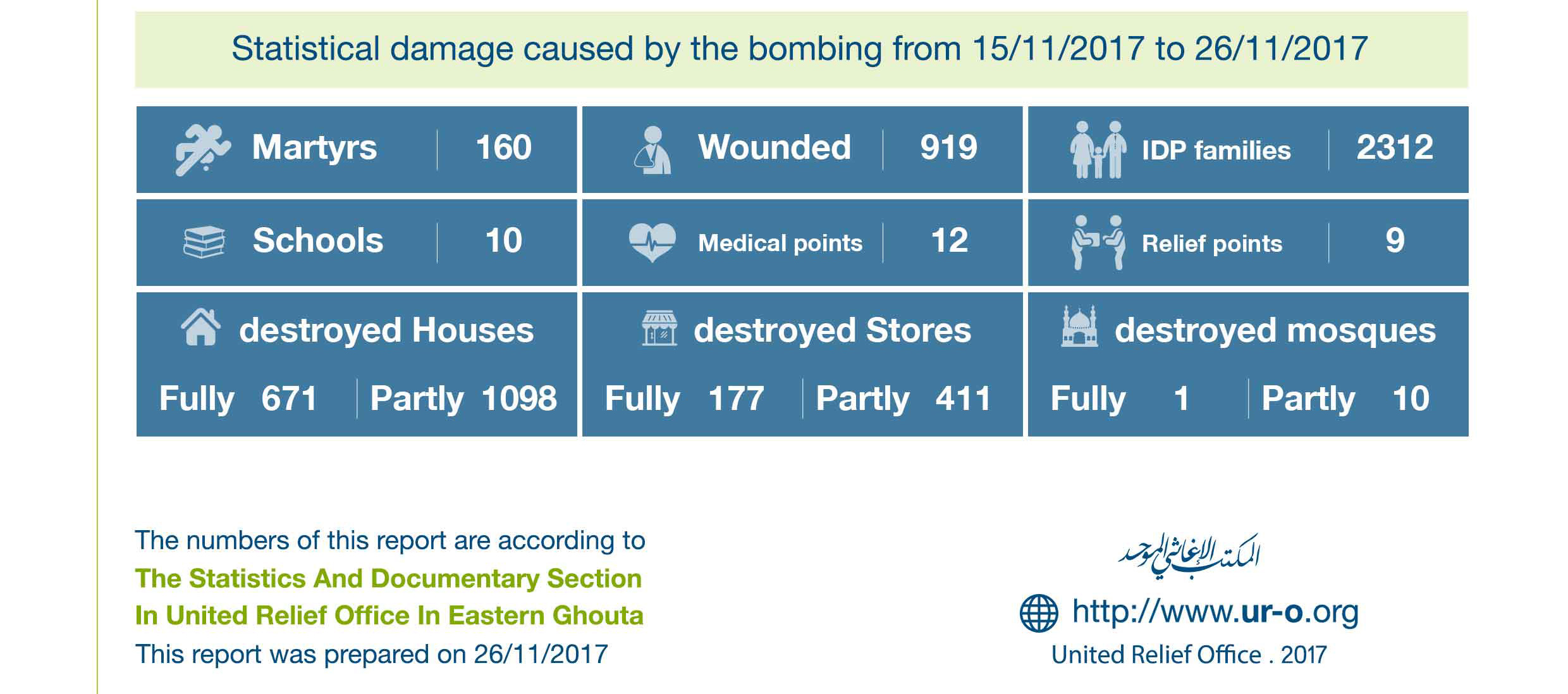
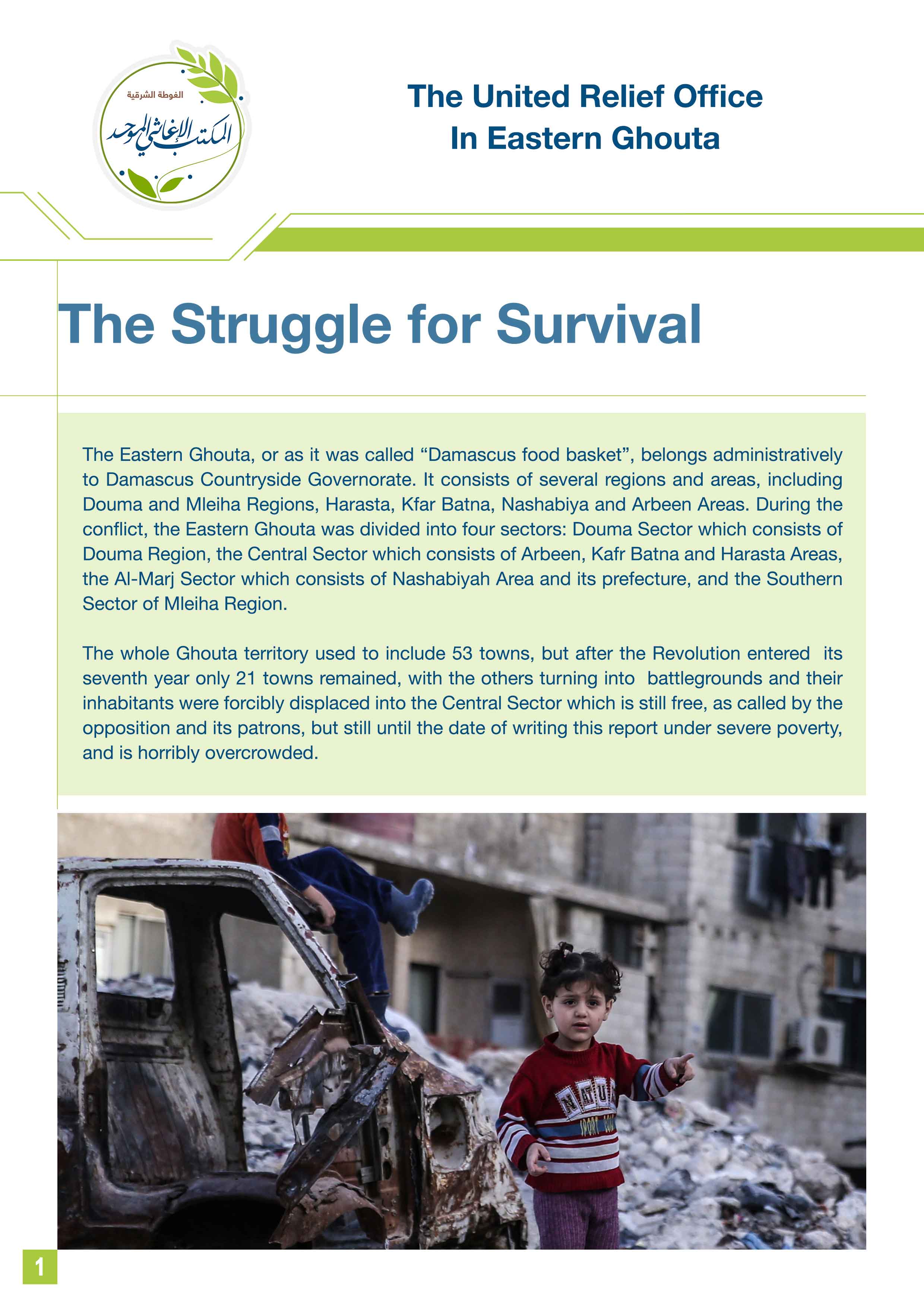
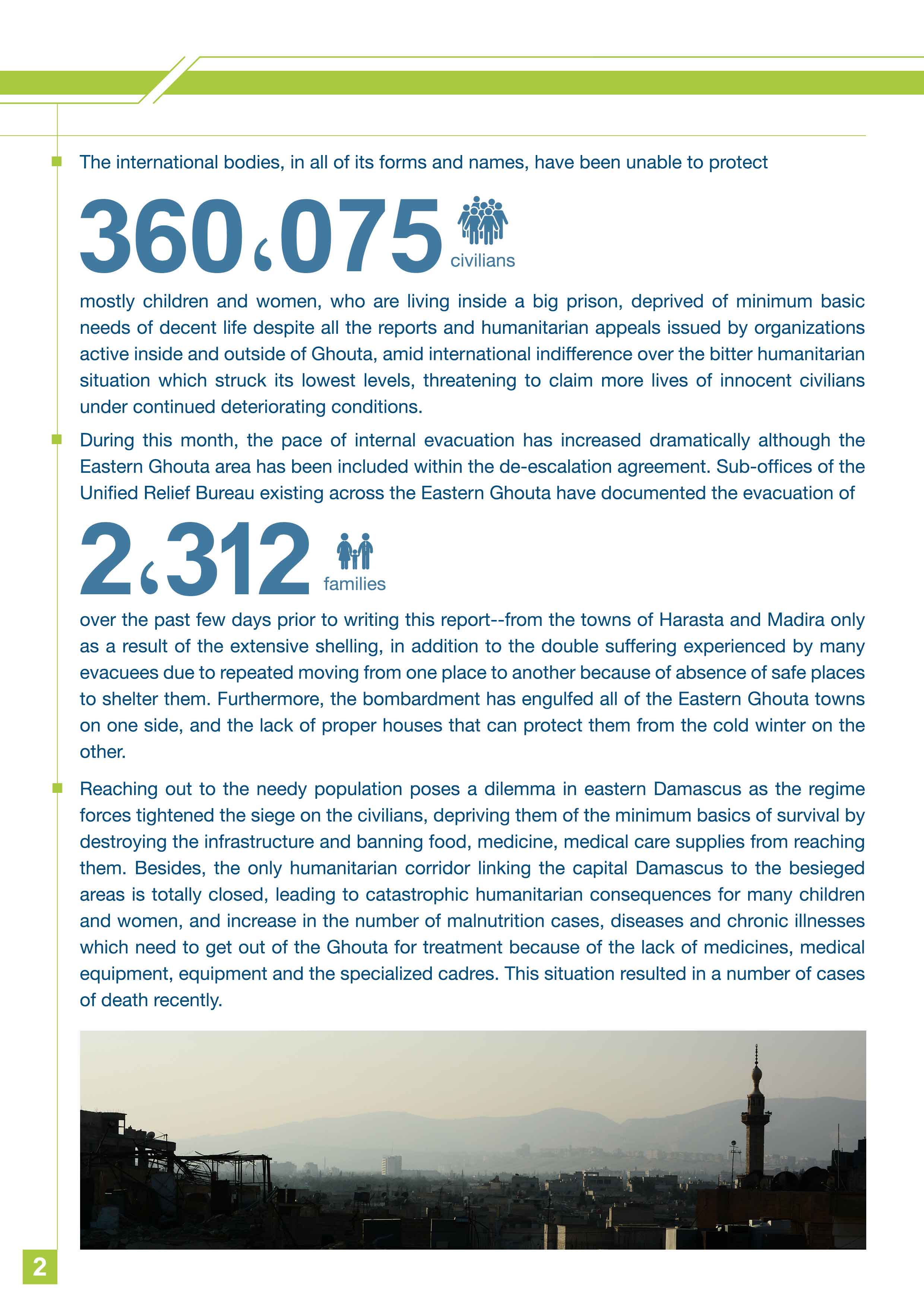
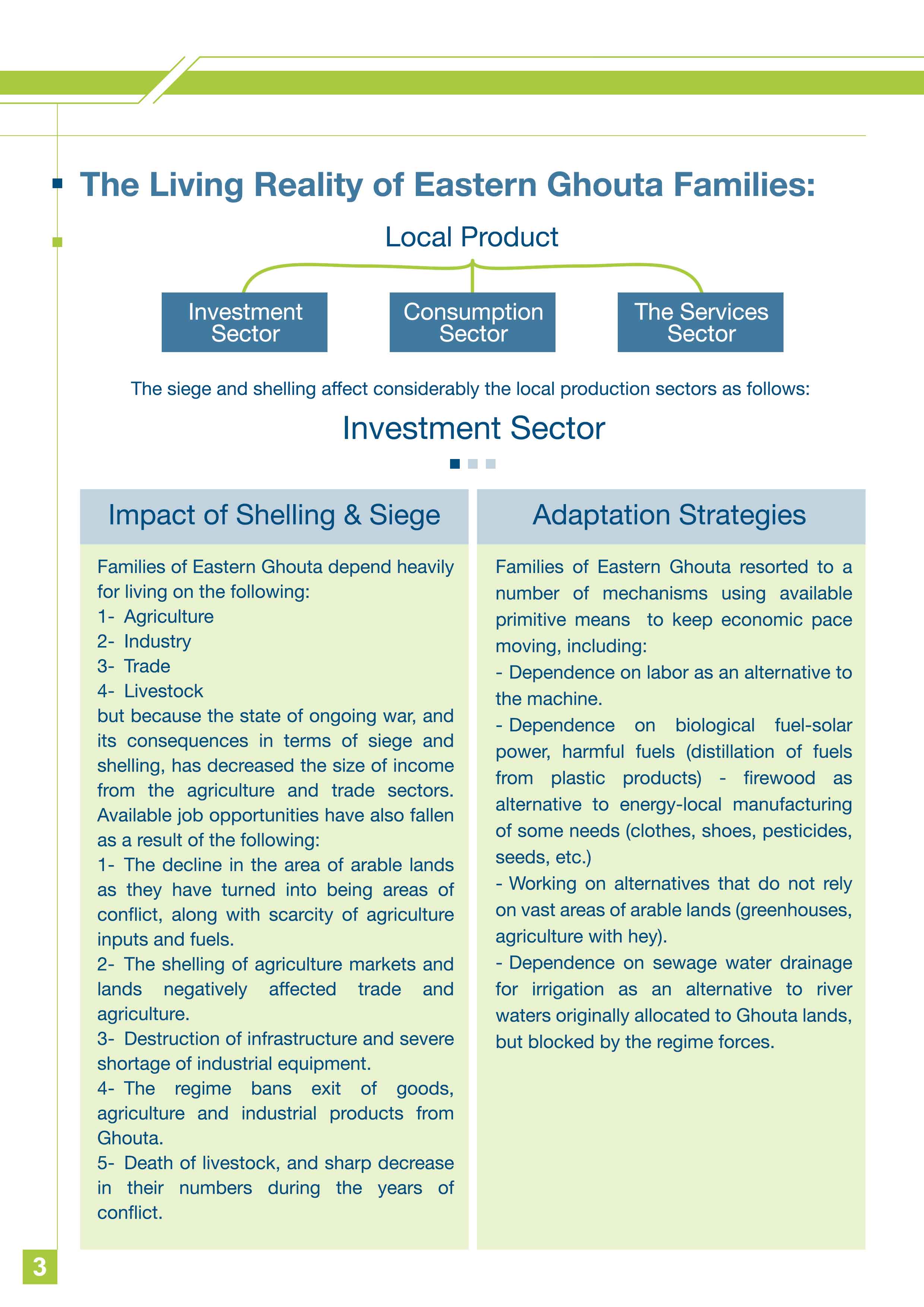
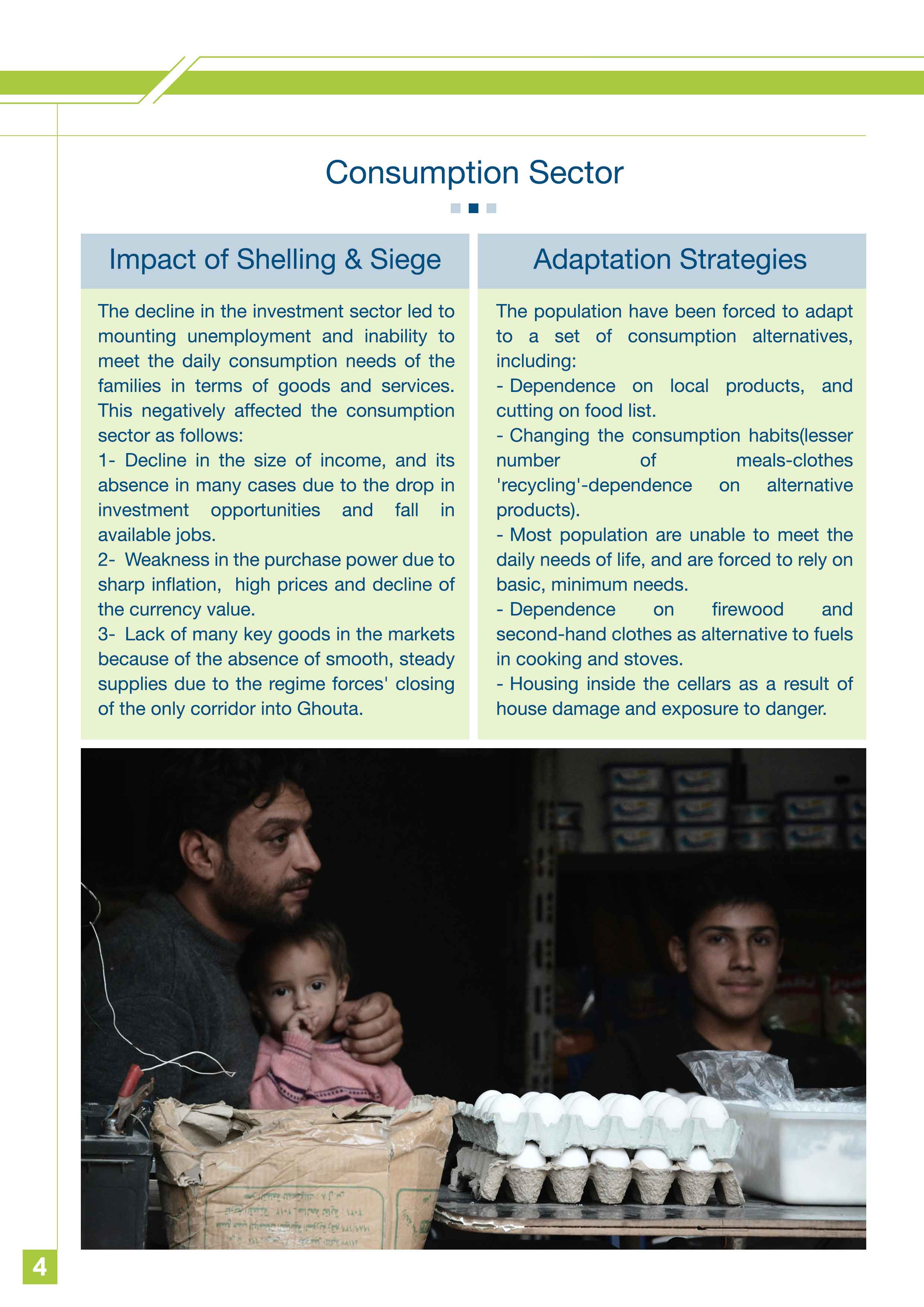
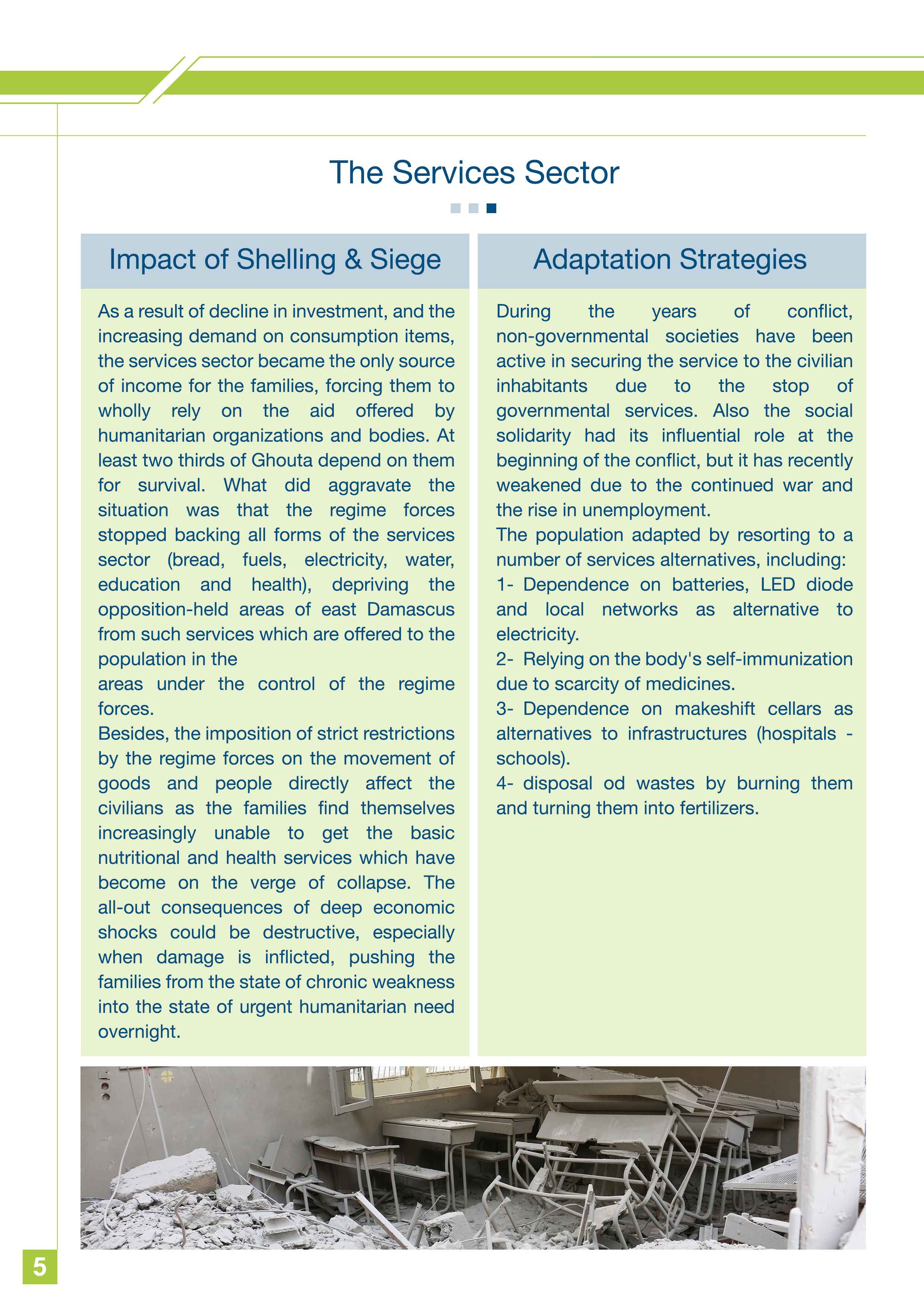
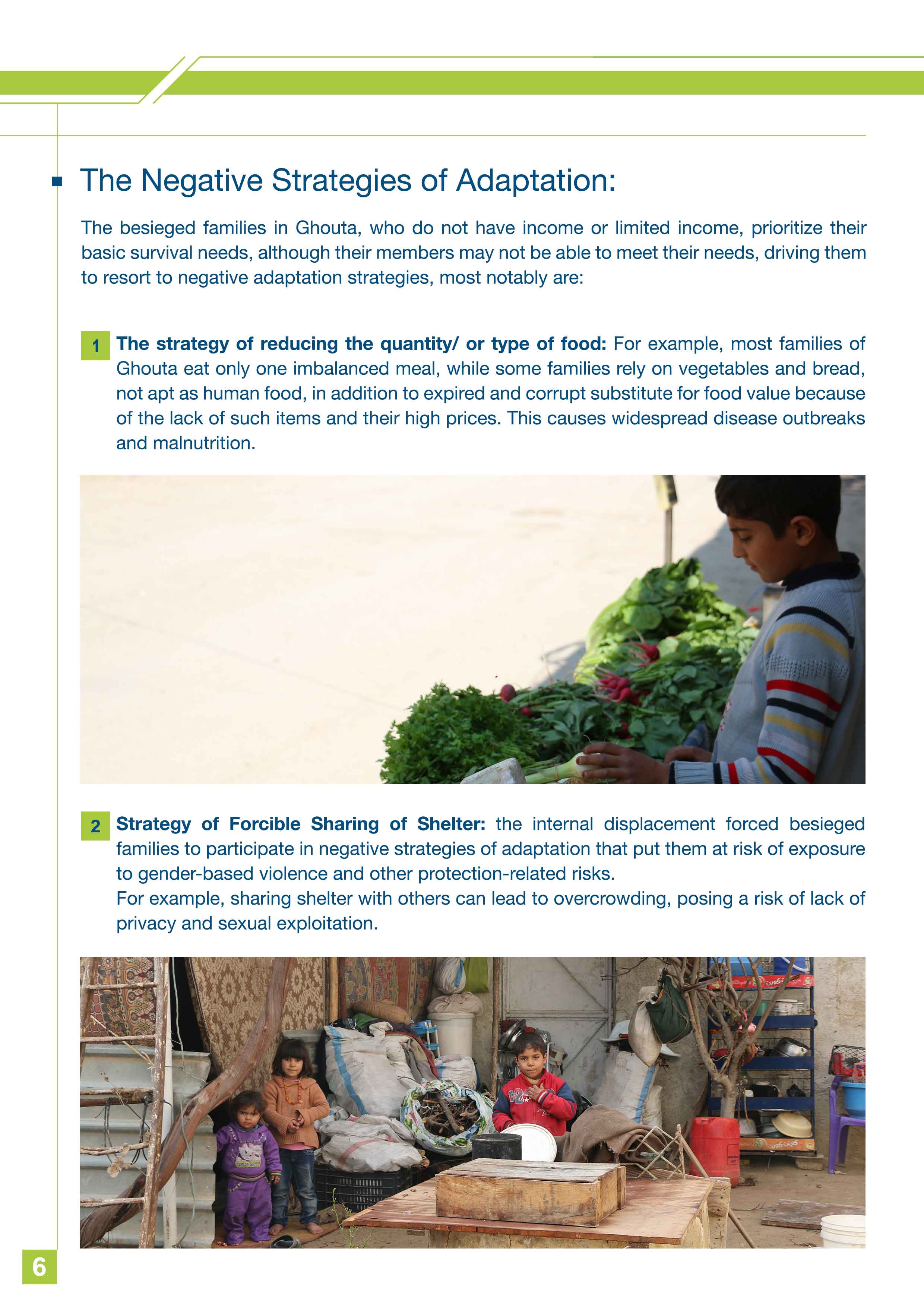
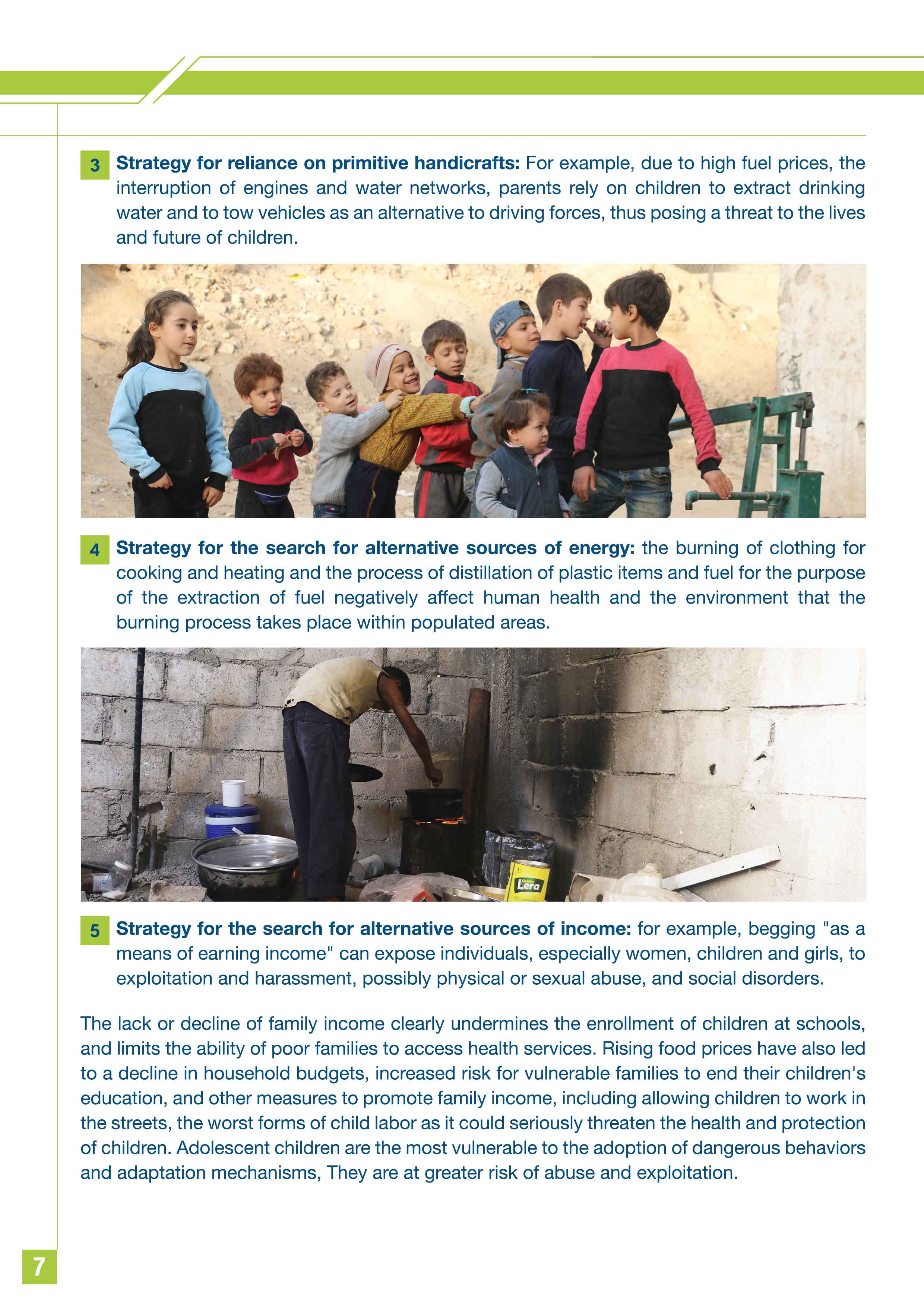
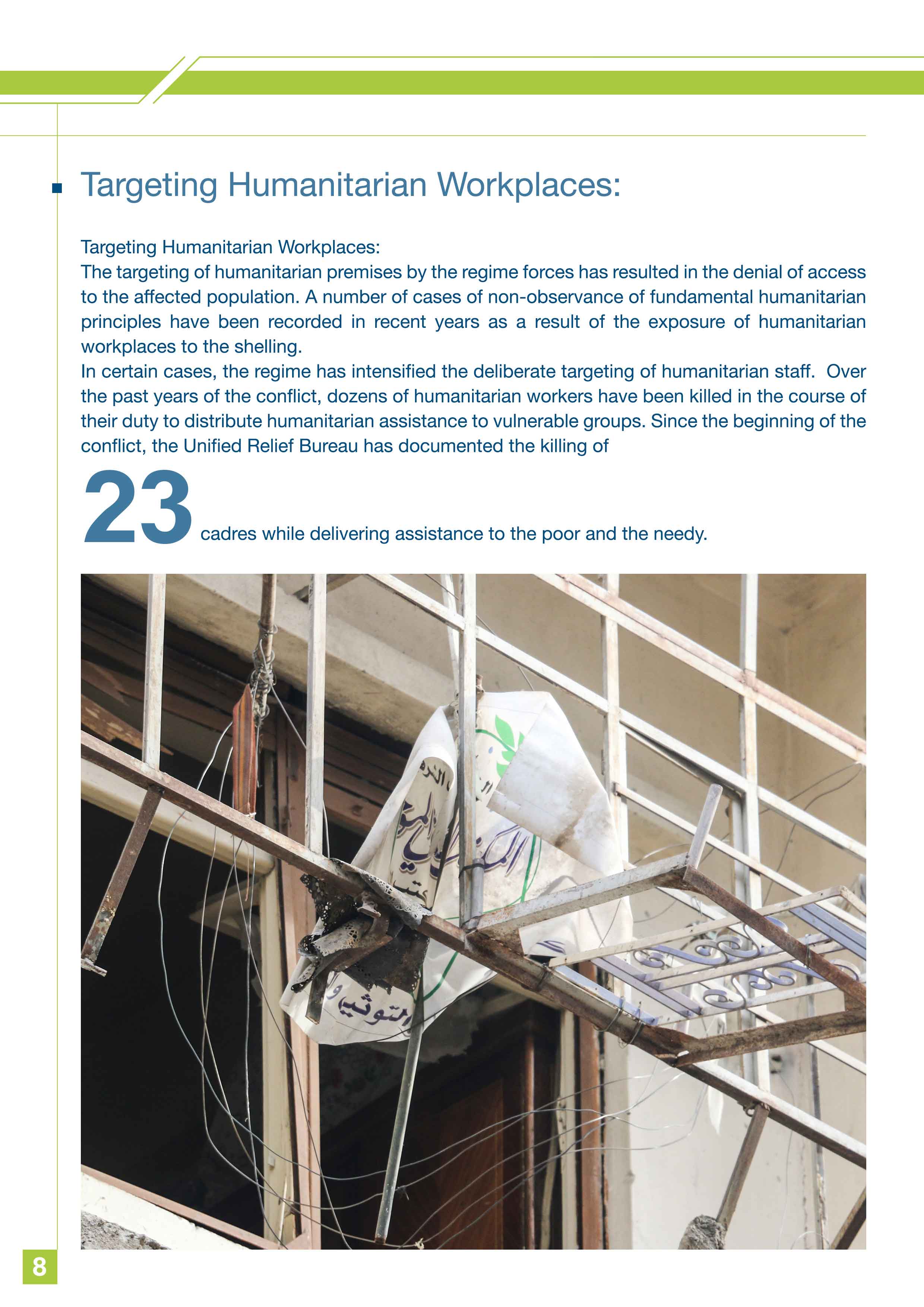
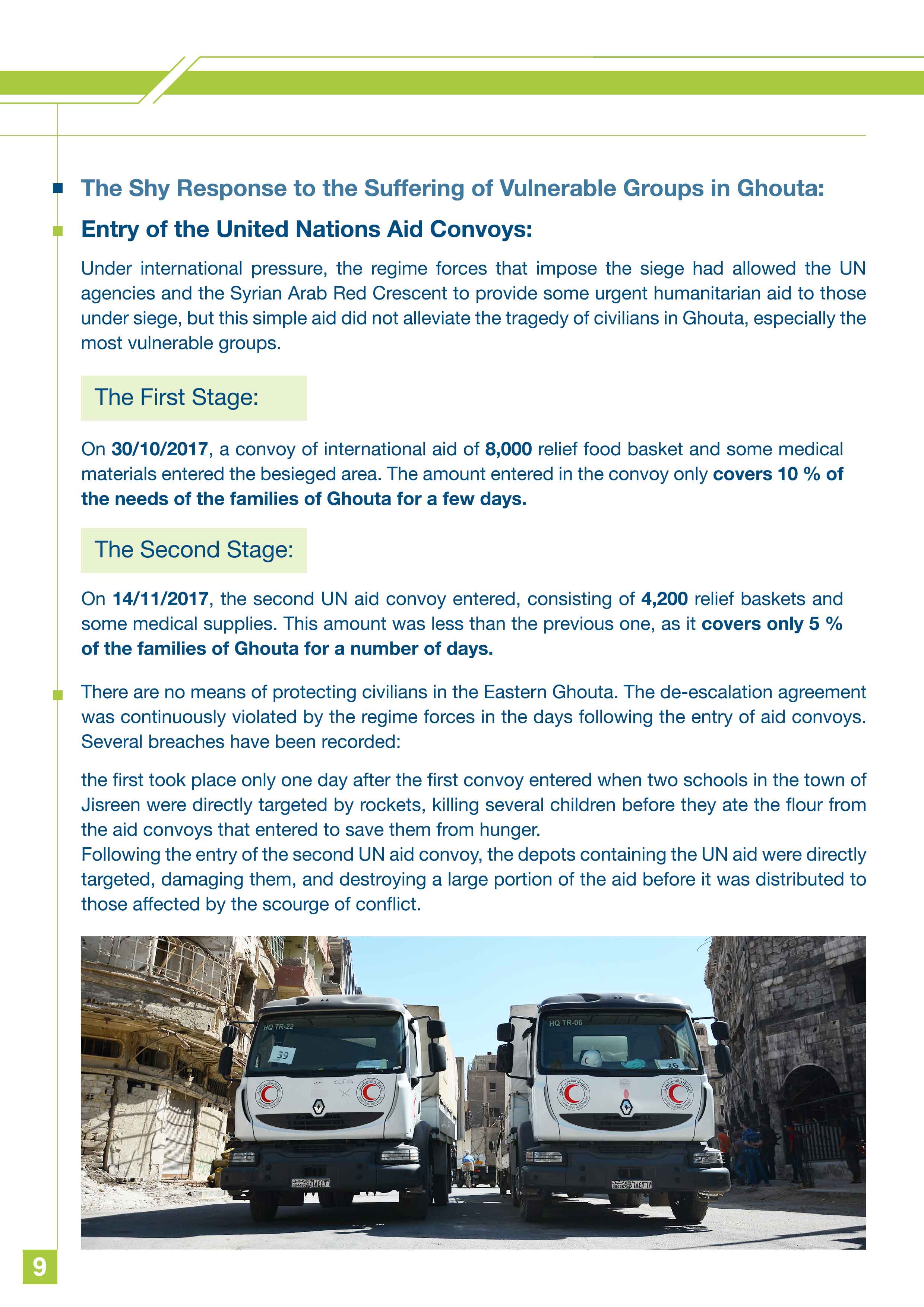
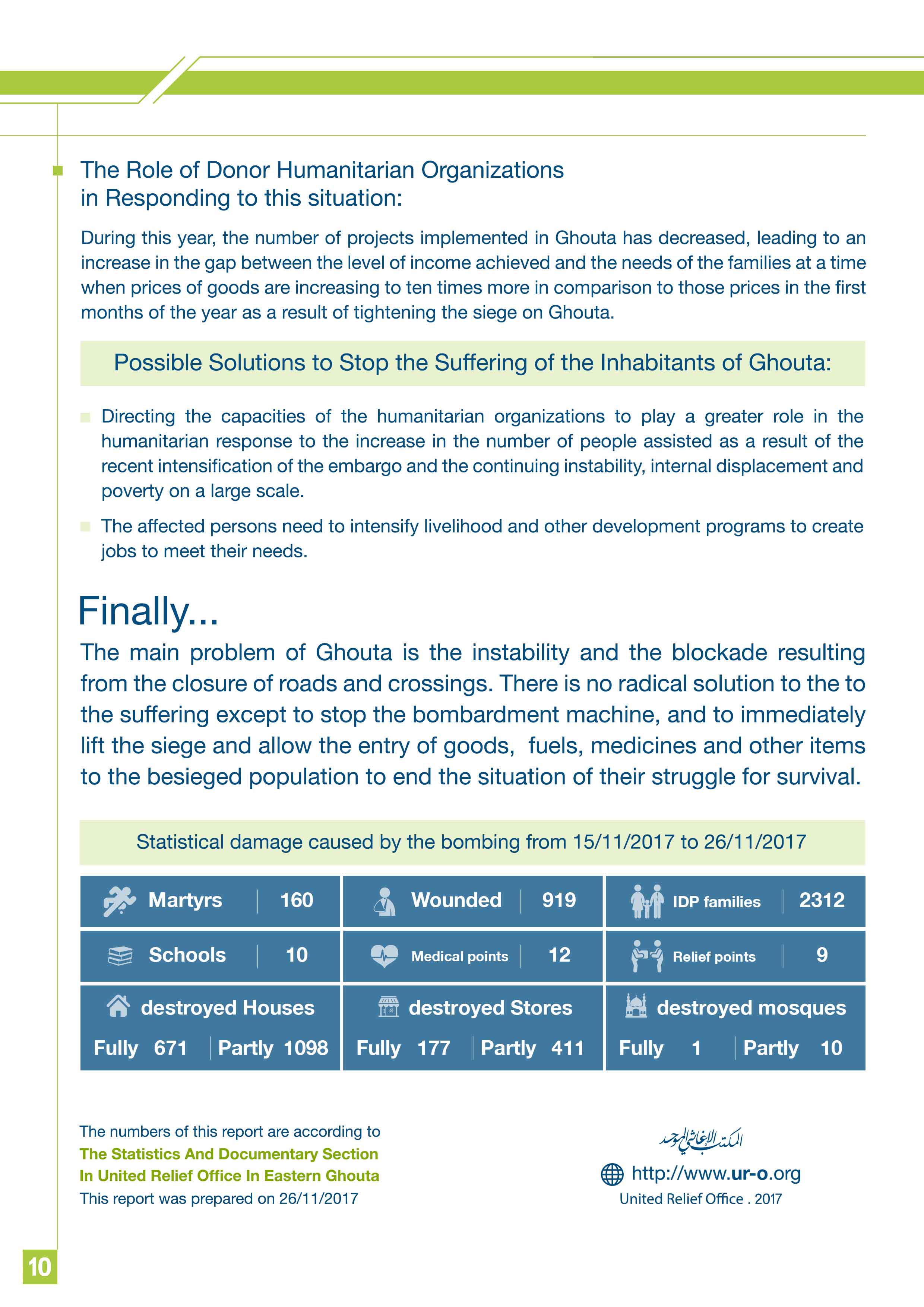
----------- THE END -----------
TO DOWNLOAD THE REPORT AS PDF FILE, PLEASE CLICK HERE





